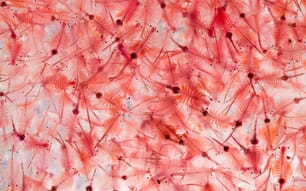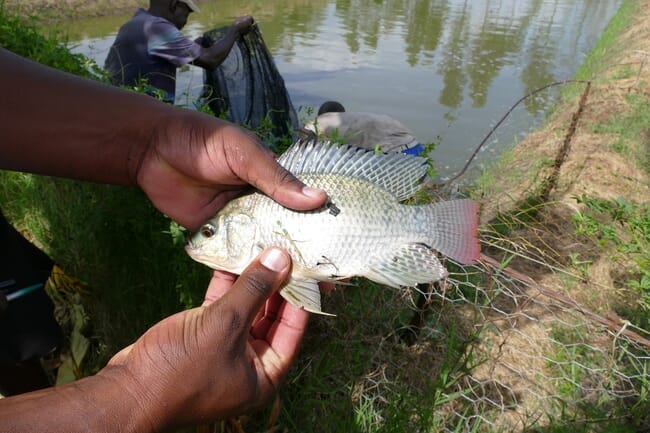
© AquaBioTech Group
Aquaculture is the fastest growing food production industry globally, according to the FAO. Research suggests that 30 million tonnes of fish will be consumed globally by 2030, and capture fisheries alone cannot meet the demand, thus the need for rapid aquaculture expansion. However, sub-Saharan Africa has limited quantities of aquaculture production to meet the demand for fish. This gap in demand and supply creates excellent opportunities, especially for the Kenyan aquaculture sector, based on favourable climatic conditions and vast amounts of areas suitable for aquaculture production.
The current annual fish production in Kenya is 400,000 tonnes, while the annual demand is 600,000 tonnes. As well as this sizable production deficit, the fish consumption level is only 4 kg per capita, per year – far below the global average of 20 kg. In order to increase the fish consumption level and curb undernutrition, it is important to create awareness of the health benefit of fish, especially for women and children, as fish contains high levels of beneficial nutrients like zinc and iron.
Some of the great potential opportunities yet to be fully realised in the Kenyan aquaculture sector are listed below.
1: Natural resources and suitable conditions
Kenya has a vast network of aquatic resources – including lakes, rivers, reservoirs and an extensive coastline – equating to over 1.14 million hectares, which could support a production capacity of over 11 million tonnes of fish per year, according to the FAO. However, only a small proportion of these resources are currently utilised; a clear indication that the Kenyan aquaculture sector has room for expansion.
Although most parts of the country are suitable for aquaculture, about 95 percent of fish farming is in ponds and on a small scale. The use of cages, recirculating systems and raceways could increase production, and help to attract investment in processing, value addition, and efficient distribution systems throughout East Africa.
2: Aquafeed
One of the most pressing challenges in aquaculture is the lack of effective and economical fish feeds for different stages of fish development. Currently, Kenya imports 7,000 tonnes of aquafeed annually mainly from small-scale fish feed manufacturers within East Africa who produce on-farm feeds while other feeds are imported directly from Israel, Netherlands, Mauritius and Denmark. Many small-scale fish producers opt to formulate their own feeds, which leads to low fish production, according to the Journal of Sustainable Aquaculture Research. Hence, there is a strong demand for high quality, affordable and consistently available feed.
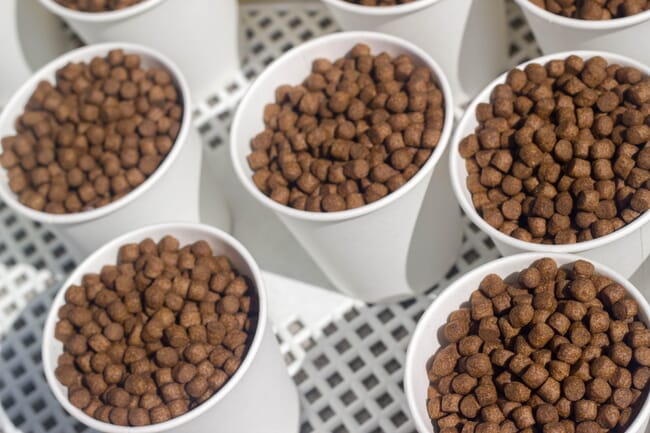
3: Fish species
The main cultured species in Kenya’s freshwater systems are Nile tilapia, which account for about 80 percent of production, followed by African catfish (C. gariepinus), which contribute about 14 percent. These species are fast growing, can be found in virtually all aquatic systems, are suitable for cage, pond and tank-based aquaculture systems and have strong demand in the local and regional markets. African catfish fingerlings are also used as bait fish in capture fisheries, in addition to being used in stocking fish ponds, thus leading to increased demand every year.
The demand for tilapia fingerling is 100 million per year and, despite the government’s efforts to improve existing fish breeding centres, this huge demand cannot be met as Kenyan fish farmers are wary of what they see as the complex technical knowledge and facilities required. This shows the importance of education, as well as a market for private investors who can produce good quality tilapia seed fish by using sex reversal to provide same-sex fingerlings, and, hybridisation techniques for both tilapia and catfish.
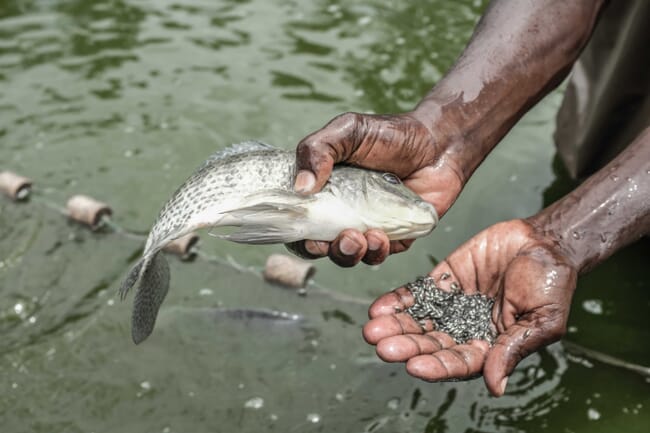
© Msingi
4: Mode of production
Kenyan aquaculture production is predominantly pond-based, due to their relatively low cost. Intensive fish farming technologies such as cage culture, recirculating culture systems and aquaponics are uncommon, due to the high cost of infrastructure and the complex knowledge needed to operate them. Tank fish farming, which is a good alternative to ponds or cages in cases where there are favourable economic conditions (but limited land and water), is still minimal. This is an unexploited opportunity for investment, as trials have shown that fish can be grown at high densities in tanks under good management.
Despite the prevalence of pond culture, many systems are very basic, with some fish farmers still having their ponds naturally stocked by flooding from rivers and lakes. This can be improved through investment in proper and durable fish farming structures that can produce fish all year-round, and the establishment of more hatcheries.
Since the production of farmed fish species depends on the productivity of the farming systems used, it can be scaled up through alternative technologies, and by using improved fish species, such as genetically improved farmed tilapia (GIFT).
Investing in the development of cage technology, greenhouse farming in cold regions, and recirculating aquaculture systems (RAS) has the potential to significantly improve national fish production, job opportunities, food security and incomes.
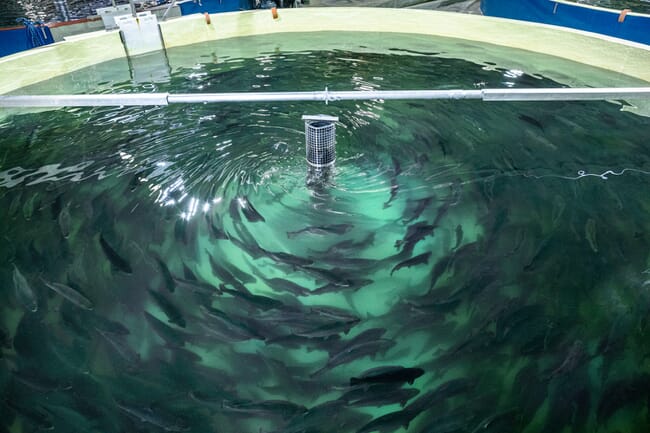
5: Mariculture
Although freshwater aquaculture has progressed significantly over the last decade, the mariculture sector presents the biggest opportunity, as it is yet to be fully exploited. In the coastal region of Kenya, the most commonly farmed finfish species is milkfish, which accounts for about 90 percent of the country’s marine production, while mullet make up the remaining 10 percent. In 2015, the annual milkfish production increased to 3.2 tonnes from less than 50kg in 2005. As of 2017, the total global production of live weight milkfish, excluding China, was 1.7 million tonnes which contributes 3.63 percent of world aquaculture production. Mullets are still produced below the maximum sustainable yield level with no significant data available. (FAO 2018)
The major problem with mariculture is the high mortality rate of the juveniles due to the lack of suitable feed. However, Kenya has the perfect conditions for the culture of Artemia which would be ideal for feeding juvenile marine fish and Kenya could even join other world leaders like Vietnam in the global Artemia cyst trade. Artemia can live in stressful hypersaline habitats such as salt lakes, coastal lagoons and solar salt works such as Kensalt, Malindi and Kurawa salt works that occur along the Kenyan coastal regions.
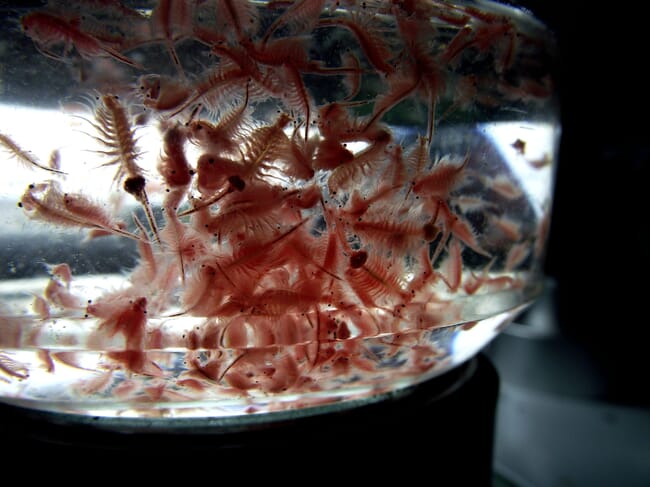
Other underexploited ventures include oyster culture, silver pompano culture, mussels and abalone culture, which have not yet been initiated. The commercial viability of seaweed farming also presents a great market potential for Kenya, which has over 380 species of seaweed documented, the majority of which are different from other regions like Tanzania.
Conclusions
In order to support and grow the aquaculture sector, there is a need to address problems such as the lack of information on the economic performance of various fish farming systems and create avenues to boost investment by the private sector by creating a focused promotion of aquaculture. Educational institutions also have an important role to play in linking up with industry leaders, research organisations and offering relevant courses to allow graduates to fully exploit these opportunities in the sector.
There is a huge potential for the industry to create employment and empower communities, yet at the moment many aquaculture graduates have few opportunities to develop their careers in the field, due to the limited development of the industry. It is disappointing to see that some aquaculture courses have been phased out, due to the low uptake by university students. It is important to investigate the underlying issues and provide solutions in order to promote the reintroduction of these courses.



